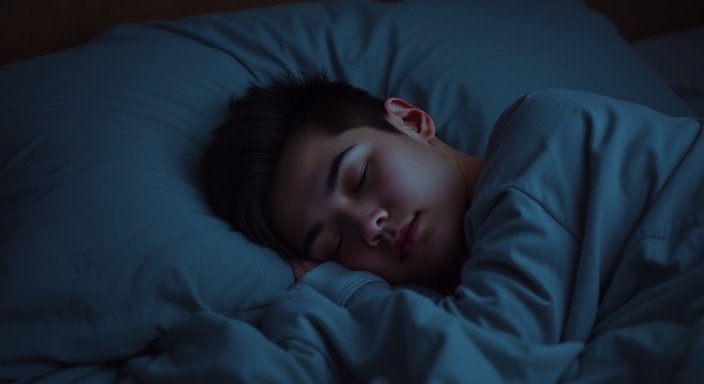Migraine is a severe relapsing headache that can be debilitating if you get it. According to the World Health Organization, it is one of the 10 most debilitating medical illnesses worldwide. Also, migraine impacts 30 percent of men, women, and children in the United States. And it is the third most common disease in the world, affecting 1 out of 7 people globally. Migraine costs more than 20 million each year in the United States due to direct medical expenses and loss of productivity(1).
Migraine is a very painful headache. Many patients with migraine describe it as a throbbing type of headache that is confined to a side. Also, the pain can be worsened by movements, loud noises, lack of sleep, caffeine, etc(3).
The headache is commonly associated with nausea and/or vomiting, photophobia, and phonophobia. Photophobia is a condition where it is difficult for you to look at a bright light because of the abnormal sensitivity to light. In phonophobia, it is difficult for you to listen to loud noises.
Living with a migraine is particularly challenging for an individual as it affects day-to-day activities significantly. There is a significant loss of working time and economically can be challenging because of the medical treatment.
Seeking medical care during an attack and continuation of the prophylactic treatment will significantly improve your functionality. So do not hesitate to go see your doctor, if you think you have a migraine. Following are 5 important facts about migraine that you should be aware of.
1. No significant cause was identified
Migraine is known as a primary headache because it does not have a specific cause. Scientists explain that it could be due to the inflammation of nerves and blood vessels in the brain. Certain chemicals like serotonin, dopamine, and glutamate are known to be involved in migraine.
Even though causes are not identified, certain triggers like lack of sleep, physical exercises, emotional disturbances, hormonal changes, and food like caffeine and chocolate are identified(5).
2. Some experience aura
In 15 percent of patients, migraine attacks are usually preceded or accompanied by transient focal neurologic symptoms; such patients have migraine with aura(6). The aura can be presented as any form of sensory stimuli. Usually, it presents as a visual stimulus. The patient may notice zig-zag lines, halos around objects as visual stimuli. Other than that, it can rarely be present as a smell, taste, or even as an abnormal behavior.
3. Cannot be cured, can be prevented!
Migraine has no cure yet. But, with lifestyle modification and medications it can be controlled while reducing the number of relapses in the future. If you are a patient with migraine, you will need to avoid the triggers that can end up in migraine. One of the most common triggers are lack of sleep, exercise, emotional disturbances, caffeine, smoking, etc.
Medications are available to use during an acute attack and to prevent future episodes. For acute attacks, the first line choice would be painkillers like paracetamol, naproxen, ibuprofen, etc. Triptans are also effective drugs during an acute attack. To prevent future episodes, drugs like propranolol, gabapentin, and topiramate are used in the common practice.
4. Migraine has different types
The presentation of migraine to the doctor varies depending on the individual. Therefore, for the treatment and studying purpose, it has been divided into several subtypes. One of the common subtypes are hemiplegic migraine, vestibular migraine, menstrual migraine, migraine with brainstem aura, etc.
5. Children also get migraine
According to the American Sleep Foundation, approximately 10 percent of children experience migraine. The risk of getting migraine increases when the parents also have migraine. However, the presentation of migraine headaches may vary between adults and children. While it is true that adults often experience migraines on one side of the head, children involve both sides of the head(7).
Summary
Migraine is a relatively common, debilitating illness worldwide. Migraine is known as a primary headache as there is no specific cause identified yet. It is commonly associated with nausea, vomiting, photophobia, and phonophobia. Some patients experience an aura which is commonly presents as a visual disturbance. There are several subtypes of migraine with different ways of presentation. Migraine cannot be treated completely but can be controlled well with medication and avoiding trigger factors. If you think you have migraine, do not hesitate to go see your doctor as it will benefit you to come back to your normal life.
Resources
- American Migraine Foundation. (2019, March 28). The Facts About Migraine | American Migraine Foundation. https://americanmigrainefoundation.org/resource-library/migraine-facts/
- Scripps Health. (2023, April 6). 5 Surprising Facts About Migraine Headache. Scripps Health. https://www.scripps.org/news_items/6103-surprising-facts-about-migraine
- Goadsby, P. J., Lipton, R. B., & Ferrari, M. D. (2002). Migraine — current understanding and treatment. New England Journal of Medicine, 346(4), 257–270. https://doi.org/10.1056/nejmra010917
- Gasparini, C. F., & Griffiths, L. R. (2013). The biology of the glutamatergic system and potential role in migraine. International journal of biomedical science : IJBS, 9(1), 1–8.
- Fukui, P. T., Gonçalves, T. R., Strabelli, C. G., Lucchino, N. M., Matos, F. C., Santos, J. P., Zukerman, E., Zukerman-Guendler, V., Mercante, J. P., Masruha, M. R., Vieira, D. S., & Peres, M. F. (2008). Trigger factors in migraine patients. Arquivos de Neuro-Psiquiatria, 66(3a), 494–499. https://doi.org/10.1590/s0004-282×2008000400011
- Rasmussen, B. K., & Olesen, J. (1992). Migraine with aura and migraine without aura: an epidemiological study. Cephalalgia : an international journal of headache, 12(4), 221–186. https://doi.org/10.1046/j.1468-2982.1992.1204221.x
- American Migraine Foundation. (2021). Migraine in Children | American Migraine Foundation. American Migraine Foundation. https://americanmigrainefoundation.org/resource-library/migraine-children/








